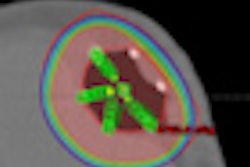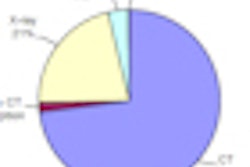Breast cancer patients who have accelerated partial-breast irradiation (APBI) performed with a strut-based applicator experienced low toxicities from the treatment, according to a presentation made today in Dallas at the annual symposium of the American Society of Breast Disease (ASBD).
The data is from the latest in a series of analyses being undertaken this year by members of the SAVI Collaborative Research Group, a multi-institutional group studying the outcomes of patients treated with a strut-adjusted volume applicator (SAVI, Cianna Medical).
The SAVI applicator, which entered clinical use four years ago, uses a single-entry multicatheter design. Each catheter can be individually loaded with a radiation dose, enabling the use of this type of treatment for women whose cancers are located very close to the chest wall or the skin surface. The multiple-catheter configuration of the applicator allows physicians to target radiation to patient-specific anatomy.
The SAVI group compared the risk of developing early and late toxicities from strut-based APBI with previously reported outcomes of women who received APBI brachytherapy where a balloon-based applicator device (MammoSite, Hologic or Contura, SenoRx) was used, explained Dr. Jon Strasser, a radiation oncologist at Christiana Care Health System in Newark, DE, in an interview with AuntMinnie.com prior to the ASBD meeting.
The researchers created four categories of time following treatment during which toxicities could occur: follow-up at one year; 12 to 18 months; 18 to 24 months; and two years and beyond.
Early toxicities occurring within one year of treatment in a subgroup of 573 women included seroma, or fluid collection (1.4%), breast pain (1%), and fat necrosis (0.2%). Only one toxicity, seroma, was reported by eight women in the 12-to-18-month period, representing a toxicity rate of 2% for a subgroup of 421 women.
Toxicities, especially breast pain, increased slightly for patients at the 18-to-24-month follow-up. However, they were still very low, Strasser said. Breast pain was experienced by 2.4% of 295 women during this time frame, followed by seroma (1%), fat necrosis (0.7%), and telangiectasia, the appearance of focal red lesions from the permanent dilation of preexisting small blood vessels (0.3%).
The highest individual toxicity level occurred two or more years after treatment. In a subgroup of 191 women, a total of six patients (3.1% of the subgroup) developed telangiectasia. The next most common toxicities reported in this follow-up category were seroma (1.0%), followed by fat necrosis, hyperpigmentation, and breast pain at the equivalent of one patient per category.
Strasser and research colleagues also analyzed the treatment and dosimetry variables of 916 patients, as well as the toxicity outcomes of 421 patients who had been followed for at least 12 months after treatment. All patients received high-dose-rate brachytherapy of 34 Gy in 10 fractions that were administered twice daily six hours apart for five consecutive days. Toxicities were reported six weeks and 12 months after completion of treatment and on a six-month and/or annual basis thereafter.
Strasser said that dosimetry data were compared with observed toxicities even though this topic was not included in his presentation. He said he was gratified that this large patient cohort showed low-incidence, low-grade toxicities (only one grade 3 toxicity incident) that were comparable to the literature of published data reported for conventional APBI breast brachytherapy.
On average, the number of patients treated with SAVI at Christiana Care Health System represents about 15% to 20% of those receiving therapy for early-stage breast cancer on an annual basis. Strasser estimated that approximately 75 patients elected to have the treatment on an annual basis.
When asked what type of patient elects the treatment, Strasser said that if he had to generalize, it was the motivated, older woman who wanted to have a short course of radiotherapy and who was not squeamish about the invasiveness of the procedure.
"Some women prefer external-beam radiotherapy treatment. The choice is very individual and very patient-dependent," he said.



















